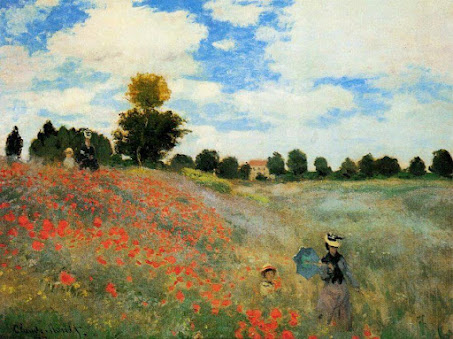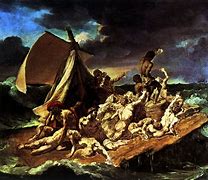Renaissance Spotlight: Hieronymus Bosch
The triptych above is The Last Judgement, one of Bosche's most famous paintings. Art historians believe that Bosch painted this piece in Bruges as a commission for Philip the Fair around 1505. The triptych depicts the fall of humanity across its panels, beginning with the original sin in the Garden of Eden.
The Triptych
Along the first third of the piece, God is depicted casting out Lucifer and the fallen angels from Heaven. Adam and Eve are also shown succumbing to the temptation of the serpent and being cast from the Garden in a similar fashion to the angels falling from grace.
The second third of the triptych is gruesome and appalling with a fantastically horrifying depiction of Limbo. Within, humans are tormented by the sins they commit and numerous demons.
The third panel descends further into the depravity of the second, with its display of hellfire and Lucifer sitting as the lord of a land of suffering and torture. This panel mirrors the first with God ruling in Heaven and Lucifer ruling in Hell.
Observations and Thoughts
Bosch shows a deep pessimism for humanity in this work, common among Protestant groups of the time around the Reformation. When compared to an earlier Last Judgement Bosch worked on, this piece shows an unstoppable descent of humanity, rather than a road to salvation. Commissioned by the Duke of Burgundy at the time, Philip the Fair, the piece contains details echoing Protestant theologies that could be found in denominations in the region, such as a demonization of music, believing it to be an indulgence to be shunned.
I wanted to share this painting because I find Bosch to be one of, if not my favorite Renaissance painters. His fanciful depictions show a mind and imagination truly unleashed and from that he created some of the most haunting imagery of his time. For me, this triptych is most terrifying for the inevitability it displays, as if there is no good waiting for us. Very frightening, and I would like to keep this piece as far away from myself as possible.
Bibliography
Arthistoryproject.com, 2022, arthistoryproject.com/site/assets/files/9839/heironymous_bosch_-_the_last_judgement_1482_oil_on_wood_167_7x60cm_164x127cm_academy_of_fine_arts_vienna_min.png.
Bosch, the Last Judgment. “Bosch, the Last Judgment.” Khan Academy, 2017,
www.khanacademy.org/humanities/renaissance-reformation/northern/hieronymus-bosch/v/bosch-last-judgment-triptych-1504-08.
“Hieronymus Bosch.” Nga.gov, 2019, www.nga.gov/collection/artist-info.986.html.




Ozzy,
ReplyDeleteI think Bosch is one of the more interesting artists of the Northern Renaissance because his style seems so bizarre and unique with sometimes outright bizarre scenes with nudity, monstrous creatures and dreamlike images. I think that fits his subject matter however in this case, as he is trying to illustrate an abstract scene; the apocalypse from The Book of Revelation. Out of everything I am left wondering about the lack of horses in the painting, since there is a large emphasis on them in the written text (The Four Horsemen of the Apocalypse, the White Steeds of God's army, etc.). Also, in the top center there are only four angels with trumpets instead of seven. With the Protestant beliefs against music influencing the piece, it gives the trumpets a much more sinister meaning.
I think it's interesting that Bosch made two different Last Judgement paintings. I wish you included a picture of the other one because that would be cool to visually compare with your writing. I'm wondering if the differences could be attributed to Bosch himself, or of request from Philip the Fair who commissioned him.
I looked at many artwork paintings by Hieronymus Bosch; they are wild and fascinating! One of my favorites was Concert in an Egg; I almost chose to use this one for my blog post. You did a good job connecting Bosch's painting with the Reformation; I did not realize music was something that Protestants disagreed with. I appreciated your honesty about not liking Bosch's artwork; we often turn to things we enjoy and don't share an item of our distaste. Because you shared a piece of artwork you were not fond of, I was hoping you would have used some of this in a deeper analysis of the painting you chose. You shared that you felt the artwork was haunting and did not like looking at it; hearing your thoughts on what specific art elements of this piece bothered and frightened you.
ReplyDeleteThank you for sharing your blog with the class, Christopher!
Ozzy, great post! I love The Last Judgment by Michelangelo but hadn't heard of The Last Judgment by Hieronymus Bosch. They're similar concepts but are overall quite different. Bosch painted his version several years before Michelangelo. Bosch's is also quite dark in color while Michelangelo's is lighter and brighter. I think I like the colors and tones of Bosch's painting more as they give the piece more depth and emotion. I feel a sense of despair when looking at the painting. They're both insanely impressive pieces of the Renaissance that greatly display humanism.
ReplyDelete